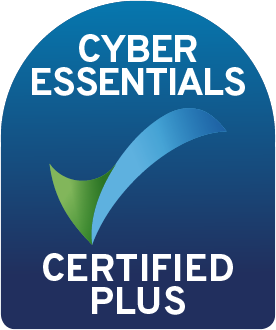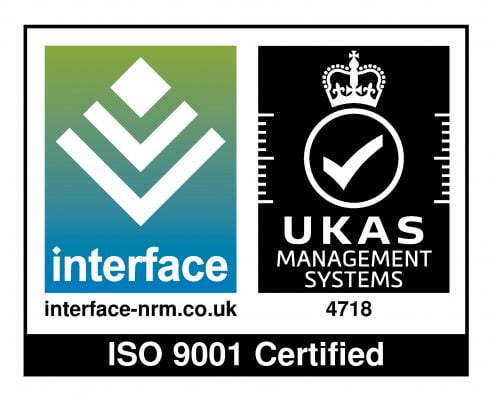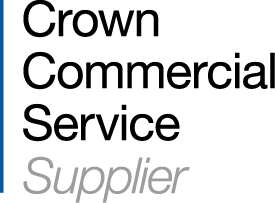Audit prep is an essential part of compliance management, but it can often be more costly than it looks, especially when carried out manually. Between lost hours chasing completions and costly fines due to compliance errors, audit administration tasks can add up fast, becoming hidden costs that drain resources, time, money, and increase compliance risk.
In fact, non-compliance costs companies in the US an average of $14.82 million annually, and manual audit processes can be a significant contributing factor. The good news is that these hidden costs can be avoided with the right approach and system in place.
In this blog, we’ll break down where the hidden costs of audit administration come from and how a compliance-focused LMS, such as our award-winning Totara Learn system, can cut audit preparation time by up to 70%, while reducing risk and saving you money.
Wasted hours
Far too often, business leaders and compliance administrators underestimate how much time manual audit preparation and administration actually takes. Repetitive tasks such as digging through emails for training records, cross-checking spreadsheets, and following up on overdue completions can equate to 30+ hours a month.
While audit preparation may feel like an occasional, once-a-year scramble, hidden costs soon add up, making it an ongoing drain on time and resources.
Here’s where time is often wasted:
Data fixes
Whether it’s updating outdated spreadsheets, correcting incorrect completion dates, or filling in missing records, fixing data inconsistencies is one of the biggest time drains in audit administration. These issues often arise because information is spread out across a vast number of disconnected and outdated systems and is updated manually.
Chasing completions
Often the most repetitive and frustrating element of audit administration, chasing completions is far more than just reminding someone to finish a compliance training course, it can involve multiple follow-ups on areas such as confirming manager sign-off, or ensuring the latest policies have been read by the right people.
Chasing completions not only slows down audit readiness, it also eats into the valuable time of administrators, time that could be spent more productively.
Paper trail hunting
Paper chasing during audit prep in a tight time frame often means digging through emails, shared folders, or even physical paper records just to find the right data. With important documents scattered across various systems or in offline folders, hunting for data that should be readily available can take up significant time and leave your team at risk of missing important compliance deadlines.

Manual report formatting
When reporting is carried out manually, administrators can waste hours copying and pasting data into spreadsheets, rechecking formulas, and making sure everything looks right for auditors. Manual report formatting is tedious, time-consuming and leaves your compliance management open to human error and in need of reworking when mistakes are flagged.
Financial fallout
Now we’ve explored time, which is arguably the most widespread and obvious hidden drain, we’ll explore the financial fallout that often follows. Time lost to inefficient, manual admin is easier to recognise during the day-to-day, but the true cost shows up later in the form of fines, inefficiencies and reputational damage.
Penalties and fines
The cost of non-compliance is all too real. Missed training deadlines, data breaches, and health and safety lapses can lead to significant financial penalties, especially in highly regulated industries such as healthcare, finance, and professional services. The truth of the matter is, these fines are often completely avoidable, but manual admin makes it far too easy for mistakes to slip through the cracks.
Without reliable systems with real-time data and oversight, important deadlines will get missed, records will go unchecked, and small errors will snowball into big mistakes, turning the hidden cost of audit administration into a huge financial burden waiting to surface.
The cost of inefficiency
While penalties and fines may be given occasionally, there’s an ongoing hidden cost that could consistently be eating into your compliance budget: the cost of inefficiency. Repetitive admin work, disconnected and outdated systems, and siloed data mean your teams are duplicating effort and relying on legacy systems that simply aren’t built for the job.
These hidden inefficiencies could be costing your business thousands of pounds in wasted resources. Over time, inefficient audit administration delays audit readiness, slows down decision making, and increases the likelihood of non-compliance.
Reputational damage
Another hidden cost that’s harder to measure but arguably more lasting and damaging is reputational damage. A failed audit or a compliance misstep could significantly damage your organisation’s credibility with not only regulators, but also clients and even employees.
Reputational damage caused by poor audit administration and compliance failures undermines trust, which, over time, affects growth, profitability, and brand reputation, which can be difficult to recover from.
The LMS effect: Manual vs modern
When it comes to audit administration, the difference between manual processes and a modern compliance LMS is night and day. At first glance, manual audit processes may seem like the cheaper option, with no upfront cost, no new system to implement, and no system training required. However, the hidden costs of manual administration outlined above can far outweigh the investment in an LMS.
Here’s how manual audit administration stacks up against a modern LMS approach:
Manual tracking vs automated workflows
Manual tracking via spreadsheets, emails, and outdated systems to monitor compliance management and training completions often leads to inconsistencies and missed deadlines. Instead, using an LMS that automates enrolments, tracks completions in real time, and automatically triggers notifications when deadlines are approaching significantly reduce administrative burden and the chance of human error.
Labour-intensive report generation vs real-time insights
If your compliance teams are wasting hours, or even days, on tasks like generating audit reports, copying data from one document to another, formatting spreadsheets, and double-checking accuracy, your organisation is wasting valuable time and increasing the risk of costly mistakes.
With automated LMS reporting and dashboards, you can access real-time data and instant insights in just a few clicks, anytime you need them.
Audit-by-crisis vs proactive compliance
The audit-by-crisis approach consists of a last-minute scramble when it’s time for an audit, leaving teams rushing to pull data, chase completions, and unearth non-compliance issues at the last minute. With today’s modern LMSs, there’s no need to take this last-minute, ineffective approach to audit administration.
Instead, an LMS supports continuous compliance by keeping records up to date automatically, distributing data, training, and alerts to the right people, and making it easier to consistently and proactively monitor compliance all year round, rather than the days leading up to an audit.

Fragmented records vs centralised compliance
When compliance data is scattered across multiple systems, it can be difficult to build a reliable record of compliance, which increases the chance of missing or conflicting information. This is where an LMS excels as a centralised system that consolidates data, training records, and certifications into a single, secure, accessible and reliable platform.
Tackle the hidden costs today with Hubken
Audit administration shouldn’t be a drain on your team and your budget. Manual processes may seem cost-effective at first, but the hidden costs outlined in this blog say otherwise. It’s time to implement an LMS such as our Totara Learn system that provides all the tools to help you stay audit-ready, manage compliance training more effectively, and boost your compliance ROI as a result.
If you’re ready to discover the cost savings that come with smarter compliance, explore our award-winning LMSs or get in touch for a free, no-obligation chat with one of our friendly Hubken experts.
Audit Admin FAQs
What are the hidden costs of audit preparation?
Hidden costs of audit preparation include time wasted on manual tasks such as chasing completions, fixing data inconsistencies, searching for records, and formatting reports. These inefficiencies can lead to increased labour costs, missed deadlines, compliance risks, and potential financial penalties.
How does manual audit preparation increase compliance risk?
Manual processes often rely on disconnected systems, outdated spreadsheets, and human input, which increases the risk of errors, missed training deadlines, and lost records. These issues raise the chance of non-compliance, potentially resulting in fines and reputational damage.
Can an LMS reduce audit preparation time?
Yes, an LMS like Totara Learn can significantly reduce audit preparation time by streamlining workflows, automating reports, and consolidating compliance data into one easily accessible platform.
What automated compliance tracking features reduce audit preparation time?
Automated features like real-time reporting, auto-enrolment, and compliance alerts reduce audit preparation time by eliminating repetitive admin tasks and human error. With tools like centralised dashboards and audit-ready records, an LMS keeps compliance up to date, cutting manual effort and saving hours each month.
.png)
Serious about compliance? So are we
Visit our dedicated Compliance Training page to find out how Hubken delivers award-winning compliance e-learning solutions powered by Totara.

.jpg?width=1080&height=150&name=Slim%20blog%20CTAs%20(1).jpg)
.png?width=1080&height=150&name=Slim%20blog%20CTAs%20(12).png)



